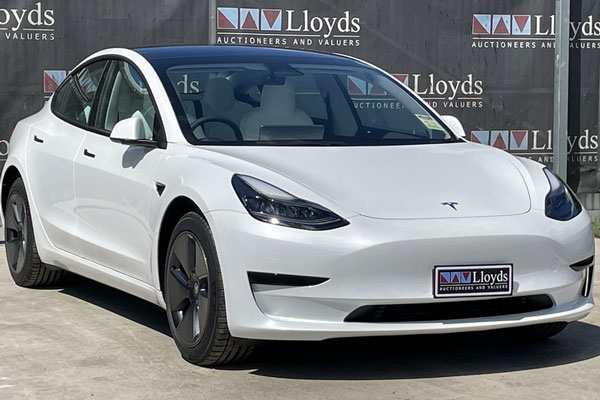EV Demand Outstripping Supply as Fuel Prices Leap in March
Thanks to the Federal Government’s budget move of cutting the fuel excise tax, the price of fuel at the bowser was – at the time of writing in the first week of April – about $1.70 per litre. Back in mid-March, however, somewhere around $2.15 per litre was the norm.
Not surprisingly, the climb to that price had an effect on the public’s thinking about what type of cars they might purchase, and news from Lloyds Auctions during the month revealed just what that thinking looked like – the company said on March 24 that second-hand Teslas it was auctioning were going for higher prices than their original retail price.
“Right now, we have a 2022 Tesla Model 3 on offer with the current bid sitting at $71,000 where they actually retail for around $68,000, and the bidding is set to close in a few days’ time,” said Lee Hames, COO for Lloyds in a media statement.
“With the current fuel prices, people are realising how much they can save in fuel per year by owning an electric vehicle, where savings could be up to 70 per cent on fuel alone.”
That second-hand EVs were selling for more than their retail value made some decent ripples across the media landscape, and Australia’s Electric Vehicle Council, on the eve of the release of its latest State of Electric Vehicles report, was fairly damning in its response to the news.
“This is a stunning reflection of how the Australian Government has allowed demand to totally outstrip supply on EVs, leaving Australian consumers with the choice between a massive wait or paying above-retail for a used car,” said Behyad Jafari, Electric Vehicle Council chief executive, in a media statement.
“The Morrison Government seems to have confused its own myopic views about EVs with those of average Australians and has completely misjudged how demand would grow.
“Global carmakers are far more interested in selling cars in Europe or the US or even New Zealand, where fuel efficiency standards are established and governments offer unambiguous support to the transition.
“Every Australian who wants to buy an EV should have the same array of options as their counterparts in America or Europe. The fact that they do not is the fault of the federal government and its unique hostility to EVs.”
The EVC’s State of Electric Vehicles report – a comprehensive rundown of Australia’s current EV landscape – highlighted this disparity, noting that the number of electric vehicle models available in the Australian market now sits at 30, with these models including a total of 65 variants. There are 28 PHEVs and 37 battery electric vehicle variants. For comparison, there are 120 battery electric vehicle variants and 40 plug-in hybrid electric vehicle variants in the UK.
Evidence beyond the sale prices reported by Lloyds Auctions does also seem to show the demand for EVs in Australia is growing fast. Sales were very strong in 2021. 20,665 were sold last year – up from 6,900 in 2020 – representing a 2 per cent market share. The EVC’s report also noted that demand had seen some popular models selling their full annual allocation within hours of being made available for purchase.
The Tesla Model 3 was by far the biggest selling model, with more than 12,000 units sold in 2021, representing nearly 60 per cent of all EV sales in the country.
The report also noted that there are 21 models of utility vehicles, trucks and vans available in the local market, and 11 manufacturers are now supplying electric buses in Australia.
Source: Motor Trader e-Magazine (April 2022)
16 April 2022










